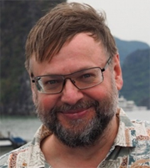Recent advances in layered semiconductor materials of extreme two-dimensionality (2D), emerging beyond graphene, have opened a new era in low-dimensional physics. This project is aimed at creation and development of basic concepts of the physics of 2D systems in the field of optical phenomena, as well as at the discovery and description of optical effects promising for device applications in nanophotonics and optoelectronics. A core of this project is determination by all-inclusive methods, both theoretical and experimental, of characteristics and peculiarities of band structure, spin, valley, and exciton states, interface bonds in 2D crystals with monolayer thickness. Model descriptions and numerical methods will be developed to analyze the observed phenomena and predict the new ones. For experimental studies of the 2D structures, the optical center will be created, possessing modern spectroscopic facilities for measurements with spatial, temporal, and polarization resolutions, as well as for magnetooptical and electrophysical studies of nanoobjects. Critically important objective of the project is fabrication of semiconductor 2D crystals and heterostructures by methods compatible with modern nanotechnology. First of all, this is molecular beam epitaxy (MBE) which allows atomic-level control over the crystal structure. The range of 2D systems under study includes both van der Waals systems, based on III-chalcogenides and III-nitrides, and monolayer heterostructures, based on III-nitrides and other compounds with covalent/ionic bonds. Novel types of 2D materials will be proposed and investigated, such as "monolayer pyroelectric" and "isotopic" heterostructures, as well as the systems combining 2D and zero-dimensional objects, "core/2D-shell" structures, and 2D semiconductor-metal systems supporting plasmonic excitations. As a result of the project implementation, it is planned to refine the band structures and establish the conditions of direct-indirect band transition and transition to inverted-bands line-up in different epitaxial 2D crystals and heterostructures. Principal excitonic parameters of the studied 2D systems will be determined and the concepts of spin-and-valley contrasted optics will be developed. The interaction between objects of different dimensionalities and resonances of different nature will be analyzed, and properties of the proposed novel 2D systems will be elucidated. In general, execution of the project will make a step towards implementation of 2D semiconductor devices, such as nanoemitters, biodetectors, polarizers, and optical modulators. As a result, the new Laboratory for 2D systems (L2D) created to carry out this project will be a world-level scientific center in this rapidly developed field. In Russia, L2D will be the first laboratory systematically investigating the non-carbon epitaxial 2D systems of monolayer and submonolayer thickness.

The Laboratory for Optics of crystals and heterostructures with extreme two-dimensionality was founded at 2017 under Grant №14.W03.31.0011 of the Government of the Russian Federation (Project Coordinator Prof. Bernard Gil) in the Ioffe Institute.


